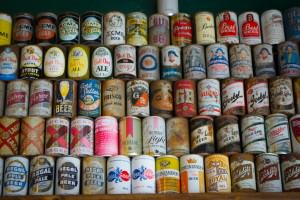Attract Craft Beer Drinkers at a Lower Cost? Yes, You Can
When you think of beer in a can, the first image to come to mind might be a cringe-inducing one. Perhaps it’s the image of a six-pack of the cheapest, least drinkable beer that the local supermarket sells. You may be surprised, then, to learn of the growing acceptance and popularity of canned beer amongst craft brewery enthusiasts. Not only is the quality of canned craft beer becoming more and more trusted; canning also brings down overhead expenses, making it possible for more beer to be shipped for the same cost.
Since 2002, a Growing Trend
You may have heard that the Pennsylvania-based Sly Fox Brewing Co. recently began selling its Helles Golden Lager in cans with a peel-off top that works in much the same way some soup lids do. What’s more likely is that it’s the Boston Beer Co.’s 2013 introduction of the Boston Lager “Sam Can” that put the existence of canned craft beer on your radar. However, in case you’re still thinking canned beer remains for the most part a novelty that’s best reserved for hipsters seeking out the humor to be found in cheap happy hour PBR specials, the fact is that while only one craft brewery was using cans in 2002, today there are eighty different styles of craft beer being produced by almost 300 differnt craft brewers.
Back in 2002, Oskar Blues was that one craft brewery. While the Colorado company was also the first American craft brewery to can its own beers, it wasn’t, contrary to popular belief, the first craft brewery to sell its product in cans. Rather, that honor goes to Wisconsin’s Mid-Coast Brewing, which (primarily for financial reasons) in 1991 began selling its Chief Oshkosh Red Lager in a can. Unable to keep up with competition from Miller, however, the enterprise folded after just a few years – as was also the case for other craft breweries who had followed suit in canning their beers as well. Oskar Blues, therefore, wasn’t a first, but it did represent the ushering in of a new wave of the popularity of a canned product among craft beer enthusiasts.
Lighter in Weight, More Space-Efficient
Not only is the equipment used to produce canned craft beers increasingly affordable, but the design of a can itself is inherently lighter and more space-efficient than the design of bottles, resulting in the ability to ship more of the product at once for the same cost or less. While one truckload, for instance, might typically ship between 54 and 60 cases of 12-ounce bottles on 20 pallets, the same number of pallets of 12-ounce cans, by contrast, can equal between 72 and 84 cases.
Yes, But What About the Taste?
Of course, making canned craft beer available to patrons is pointless if customers simply turn their noses up at it. So, do they?
Actually, Helles Golden Lager’s and Boston Lager’s cans are specifically designed to allow the drinker to have a better experience of the beer’s aroma and flavor. (The “Sam Can,” for instance, has a defined lip and large lid.) Consumers are also increasingly accepting scientific evidence showing that the aluminum from which the cans are made, which for decades have been coated with a lining that separates the metal from the liquid, cannot in fact seep into the product to affect the taste.
Environmental Pros and Cons
On the one hand, one could also argue that the craft beer drinker, more sophisticated than the average consumer, may be concerned about other issues, too, such as the environmental concerns surrounding the bauxite mining that aluminum can production requires. However, cans are in fact easier and less expensive to recycle than bottles and are therefore often considered more environmentally friendly. (For what it’s worth, it has also been pointed out that the biggest environmental problem created by the brewing of beer by far, period, is the vast amount of carbon dioxide that gets released during the fermentation process. Unsurprisingly, people don’t exactly seem to be giving up beer altogether to try to solve that one!)
Sales of craft beers have gone up enormously in recent years. The first question many bar patrons ask when they first walk in may be, “What’s on tap?” but few craft beer drinkers can refuse a seductive selection of bottled beers. The same might be coming true for canned craft beers, too.
- Uncorkd Adds New Vendor Purchasing, Tracking and Reporting Functionality - February 13, 2018
- Uncorkd Adds New Inventory Management Functionality with POS Integration - July 24, 2017
- How Many Red or White Wines Should You Have on Your List - May 3, 2016



